Osteoarthritis of the knee joint progressive degenerated-degenerative pathology. First of all, it affects the cartilaginous tissue, and in the destructive processes involved in bone structure.
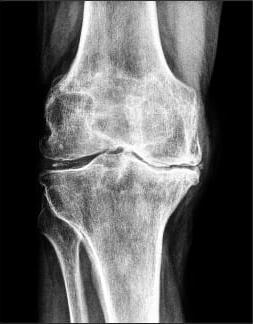
The causes of the development of osteoarthritis are high economic physical exercise, low physical activity, metabolic and endocrine systems. Leading to the clinical manifestations of the pathology of pain, increase in walking, a functional impairment of the knee joint, and deformation. To measure the progression of osteoarthritis develops ankylosis (complete or partial immobilization of the joint). When a diagnosis of the orthopedist focuses on the results of the research tools — arthroscopy, x-ray, ct, MRI. In the treatment of osteoarthritis, 1 and 2 degree of severity are used in medicines, PHYSIOTHERAPY, sessions of physiotherapy and massage. The ineffectiveness of conservative treatment or the identification of pathology in the terminal phase of a patient prepare for the replacement of the knee joint.
The characteristics of the disease
Osteoarthritis of the knee (gonarthrosis) — one of the most often diagnosed diseases affecting this joint. Under the influence of the internal or the external, negative factors in the cartilage tissue occurs a deficiency of nutrients. Following broken food, slows down the regeneration connective tissue structures. Pass premature aging of hyaline cartilage. It is refined, is crack, it is rough, lose strength, firmness and elasticity. The cartilaginous tissue can no longer fulfil its primary function — the reduction of friction at the level of the junction of the os. Subchondral bone is laid bare, to the surface, they are osteosclerotic changes. For stabilization of the knee joint during walking are increasing, flattened, the edges of the plates with the formation of osteophytes (bony growths).
Osteophytes in the knee joint.
Primary osteoarthritis affects initially healthy hyaline cartilage due to congenital reduction in functional endurance. It is this pathology secondary occurs when existing defects in cartilaginous tissue. They can be triggered by previous injuries in the knee, an inflammatory process, aseptic necrosis, hormonal changes, disorders of the metabolism.
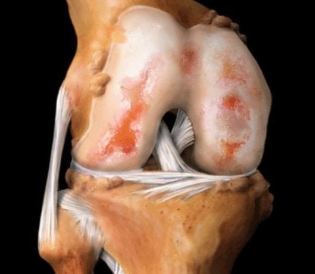
| Clinico-radiological phase of osteoarthritis of the knee | Special signs |
| The first | The mobility of the knee joint is slightly reduced, the contours of the joint space, economic fuzzy, a little narrow. On the edges of bony plates we observe the formation of a small number of osteophytes |
| The second | During flexion or extension of the knee you will hear the crackling sound of banging, creaking. The muscles moderately atrophy, shrink, significantly the slot joint, formed of a considerable number of osteophytes in the bone tissue is detected subchondral osteosclerosis |
| The third | The knee joint is deformed severely limited his mobility. There is a total or partial production of the joint space, a large number of outgrowths of bone, subchondral bone cysts, pathological formations, move freely in the joint cavity |
The causes and the triggering factors
Efforts to develop destructively-the degenerative process in hyaline cartilage generally becomes more negative factors. The cause of development of osteoarthritis of the knee in childhood and adolescence are violations of the formation of structures ligament-tendon of the device, of the dysplasia. This, in turn, is due to a hereditary predisposition. Cause the destruction of the cartilage can variety of injury — disease, severe contusions, sprains or partial tears of ligaments, muscles, tendons, meniscal tears. An excessive load on the joint to cause the development of pathology. A post-traumatic osteoarthritis develops through several (3 to 5) years after the corruption connective tissue or bony structures. The pathology may occur after a surgical intervention. And the reason is not the incompetence of the doctors and considerable damage to the cartilage and slowed regeneration. At the onset of the disease is also predispose the following factors:
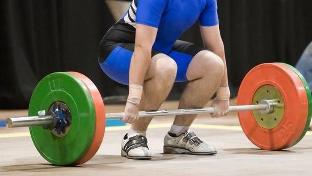
- excess body weight, in which almost all of the musculoskeletal structures, in particular the knees, exposed to the stress;
- an excessive physical activity, often leads to a microtraining cartilaginous tissue, and the further progression of the destructive processes;
- a sedentary lifestyle, which worsens the blood circulation of the legs and a deficit of nutrients in hyaline cartilage;
- the inflammatory system and degenerate-dystrophic pathology — rheumatoid arthritis, psoriatic arthritis, gout, osteoporosis, systemic lupus erythematosus (sle).
The clinical picture
In most cases, osteoarthritis of the knee joint is manifested dull aching pain after a physical activity. The cause is irritant of osteophytes on the soft tissues, venous stasis, intra-articular hypertension, muscle spasm. For osteoarthritis characteristic of the "page" of the pain, which appears because of the swelling of the joint, or synovitis. When a person remains long in a sitting position, and then rises, at first felt some pain. You experience so-called "siege" of the periodic pain of the nature. The joints of the knee during walking "wedges" in the wake of the provocative parts damaged cartilaginous tissue between the two surfaces of the joint. Also for osteoarthritis (oa) is the following characteristic symptoms:
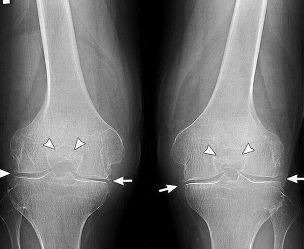
- crunching, or popping sound when bending or extending the knee, occurring during a displacement of bony structures relative to each other on the bottom of the Antoniushof of the cartilage;
- stiffness, the severity of which increases as the consolidation of the joint space;
- the spasms of the muscles located in the area of the knee, usually appearing for the reduction of pain;
- the deformation of the joint, caused by the destructive changes in subchondral bone.
With osteoarthritis of the man is difficult to climb stairs and take long walks because of the constant knee pain. Course of pathology very often by the synovitis — inflammation of synovial shells. Clinically, they manifest themselves by the formation of a rounded elastic sealing, hyperthermia, a strong swelling, increase of the body temperature 37.1—38 °C. in the absence of a medical intervention of osteoarthritis is complicated spontaneous hemarthrosis (bleeding into the joint cavity of the knee), partial or total, loss of mobility, the osteonecrosis of the femoral condyle, the outer subluxation of the patella.
The diagnosis
The clinical picture of osteoarthritis, in particular, complicated by synovitis, is quite similar to the symptoms of many inflammatory diseases of the musculoskeletal system. Thus performed a differential diagnosis for the exceptions of the arthritis, the tendinitis, of tendovaginitis. With the help of search tools is determined by the status of the knee joint, and the degree of its functional activity. In the diagnosis of osteoarthritis the most informative x-ray. On the images visible formed osteophytes, narrowed joint of the slit, the deformation of bone structures (cysts, subchondral osteosclerosis). Symmetrical narrowing of the joint space of the knee joints affected by osteoarthritis. That is likely to expose the operation will have the two ends. For more detail to assess changes in hyaline cartilage, allow an ULTRASOUND, MRI, scanner. Studies are also being conducted to identify inflammatory or degenerative lesions in soft tissues, the muscles, ligaments, and tendons. If necessary, is done arthroscopy — minimally invasive surgical manipulation. In the diagnostic process of the procedure of the investigation focused on the interior surfaces of the joint due to the closing of biomaterials — synovial shells, joint fluid, the cartilage tissue. When the synovitis with the help of the puncture is extracted pathological exudate both to improve the well-being of the patient, and the study of its composition.
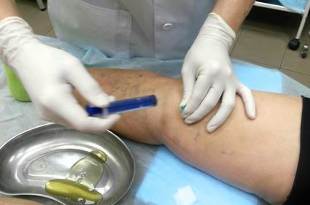
The tactics of the treatment of
Osteoarthritis of the knee 1 degree of severity quite lends itself well to the therapy with the help of physiotherapy, and long-term chondroprotectors. It is not usually necessary to use painkillers, because the symptomatology is expressed is not clear or not. With osteoarthritis of the knee of degree 2 is also made a conservative treatment. But if the disease progresses diagnosed or the destruction of a significant amount of cartilaginous tissues is carried out surgery, usual replacement. In some cases, the patient shows an arthrodesis of the course, an analogue of ankylosis, or complete immobilization of the knee.
Non-drug therapy
The patient osteoarthritis of 2 or 3 degrees since the first days of treatment is recommended to wear a rigid or semi-rigid orthoses significantly the restriction of the mobility of the knee joint. Minimizing the damage of the cartilage is quite soft to elastic bandages information request — knee-pads. They set the joint to warn against the continuation of the destruction of the tissues. Patients should reduce locomotor activity, do not lift weights, avoid a long walk. Are assigned to physical therapy (5 to 10 sessions) to improve the circulation at the knee, and the stimulation of the regeneration of the connective tissue structures:
- magnet therapy;
- laser therapy;
- high-frequency electrotherapy;
- electrophoresis with anesthetics and the protectors of the cartilage;
- appliques with ozokerite or paraffin wax.
Strengthen the muscular-ligamentous apparatus and to improve the motor skills of the tribe of will help you only regular physiotherapy sessions. The doctor of the CFL chooses the exercises individually for each patient taking into account the degree of osteoarthritis and the physical preparation. The first training sessions under its control. When osteoarthritis is strictly forbidden any movement intense. They improve the blood circulation, but at the same time, cause even more mikrotemperaturnye the cartilage. The movements need to be fluid, to be measured, with a small amplitude. Early gonarthrosis encountered changes destructive of the cartilage can be solved using only physical therapy. Well, self-imposed girudoterapiya, or treatment of medical leeches. In the absence of evidence on the joint are placed 3-4 leeches, usually in the area of the patella. The ringed worms to bite through the skin and inject it into the blood to the saliva with a huge amount of biologically active substances.
Drugs
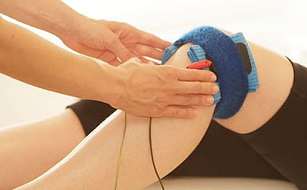
To eliminate the knee pain are organized drug blockade of corticosteroids. Hormone tools are usually combined with local anesthetics. The injection of intra with osteoarthritis are executed only if necessary, such as for glucocorticoids are secondary characteristics of the event. The more often in the treatment of osteoarthritis apply nonsteroidal anti-inflammatory drugs in various dosage forms:
- solutions for parenteral administration;
- tablet;
- ointments and gels.
In the treatment regimens necessarily included chondroprotectors in the form of injection or tablets. These ways to stimulate the regeneration worn cartilage, are anti-inflammatory, analgesic and anti-oedematous. Any pain in the knee should be a signal to immediately call in orthopedist. Timely treatment of osteoarthritis will prevent the development of serious complications, in some cases, alert to the disability of the patient.


















































